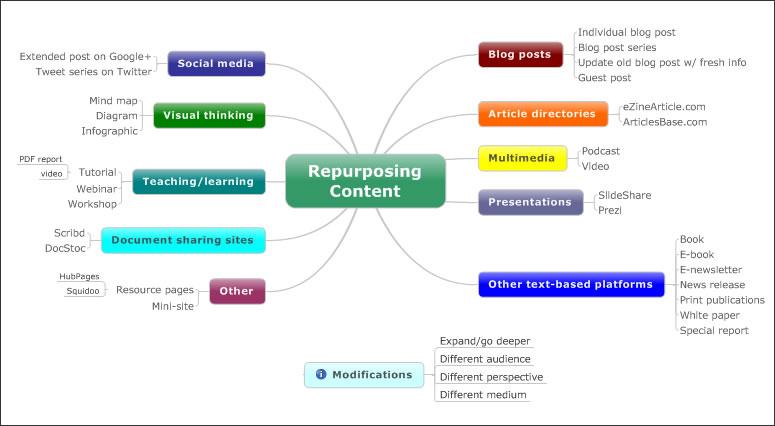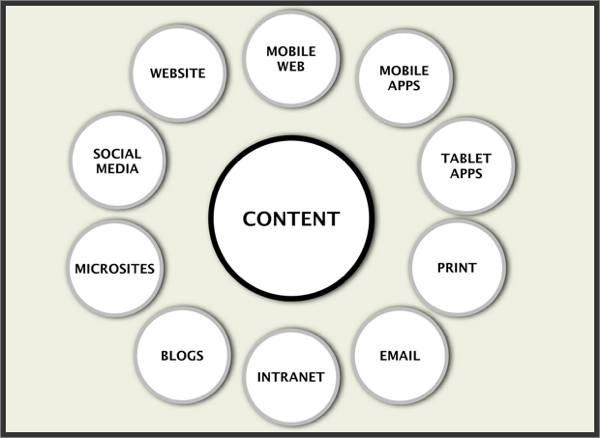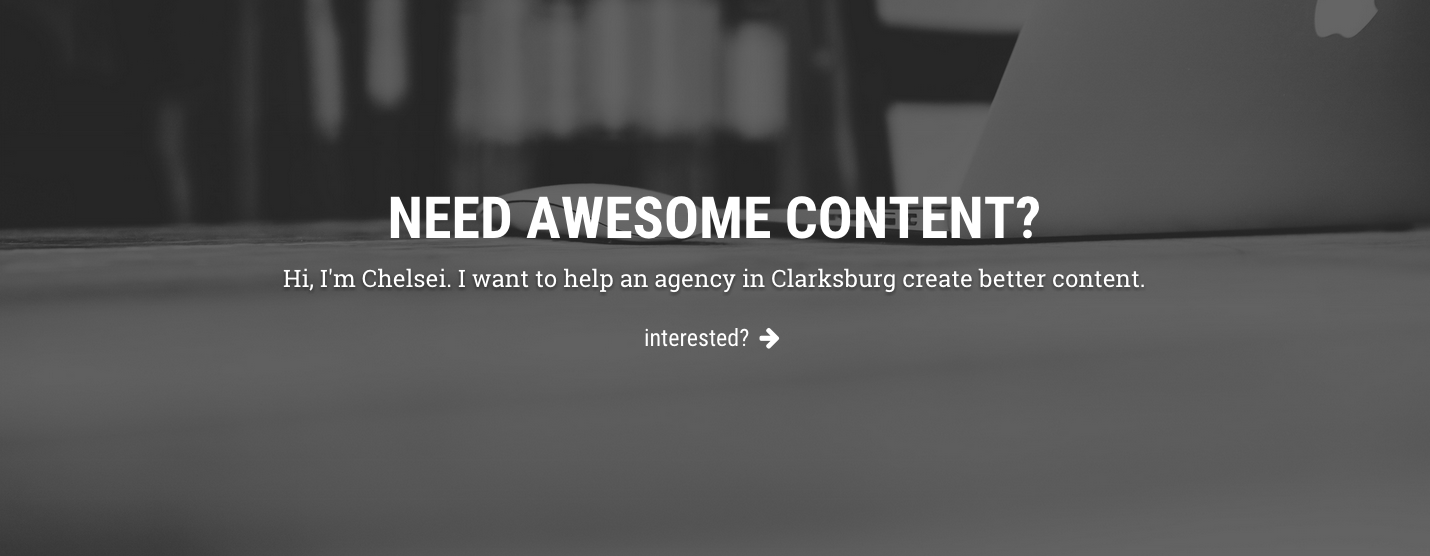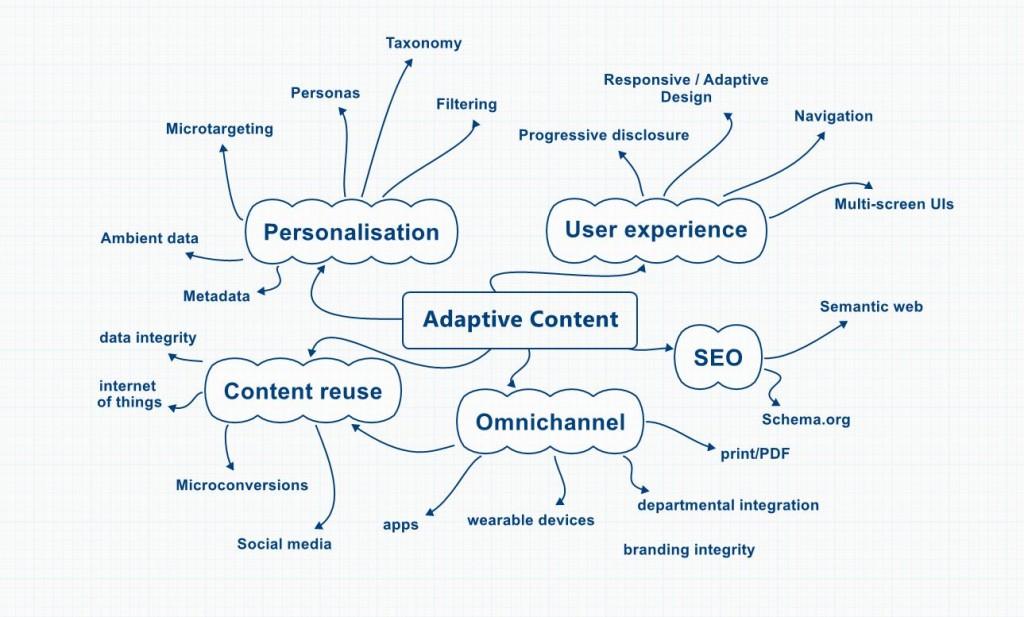A growing number of marketers and brands claim that personalization is a key component of their success.
These individuals and organizations are focusing on a new form of content development: adaptive content.
This idea is (sort of) the new kid on the block. For the purpose of this post, we’ll look at it from a twofold perspective. Adaptive content is a combination of:
- Using personalization to enhance the customer experience, and
- Preparing content for delivery across multiple platforms.
These two facets of the term work together to create a complete, well-rounded experience. By implementing it in your content strategy, you’ll turbo-charge your ability to build awareness, trust, and engagement with prospects and existing customers.
Adaptive Content Provides a Personalized Experience
Every channel, device, and scenario serve as puzzle pieces that make up the consumer journey. If you look at the hundreds of pieces individually, they don’t make much sense. But if you join them together, you can see the whole image clearly.
In content marketing, it’s time that we start looking at the big picture.
This happens through the development and implementation of a comprehensive content strategy. Your strategy should provide enough insight into the mind of the customer that you’re able to determine a clear direction for personalization.
The 5 Elements of Adaptive Content
Before we get any further into the nitty-gritty of adaptive content strategy, I want to talk about the elements you’ll want to look for during the initiative.
Karen McGrane is a superhero on this topic. If you haven’t read her book or heard her speak, you’re missing out on some really great information.
She outlines five elements of adaptive content that are critical to your success. Let’s talk about each of them briefly.
- Reusable Content – Develop content that you can use on multiple platforms. You also want the ability to create similar content in different formats to reach a wider variety of prospective customers.
- Structured Content – Create small chunks of content that can easily be consumed on multiple devices, regardless of their size.
- Presentation-Independent Content – This is the bare bones of your piece. It’s the raw content without ornate or ostentatious formatting.
- Meaningful Metadata – This hidden data quickly describes the purpose and intent of the content. This helps for easy interpretation by your viewers, as well as enhanced parsing by the search engines.
- Usable CMS Interfaces – Ultimately, you want a simple, functioning system that makes the delivery of all of the above elements possible.
Although I love the elements Karen uses, I think we can simplify it even more. I like to think of it in terms of the common phrase Reduce, Reuse, Recycle.
- Reduce the amount of work by systemizing your workflows and processes.
- Reuse content on multiple platforms and broadcast your message on every channel.
- Recycle (or, repurpose) the published work into different formats to get the most out of it.
Once you understand what adaptive content looks like, it’s time to create a stellar strategy…
Build a Strategy for Personalization
To begin, we need to first understand the five Ws. You probably remember them from grade school: who, what, when, where and why. By defining the project’s purpose this way, we’ll be better prepared to understand personalization from a strategic perspective.
1. Create Personas for Your Ideal Audience
Who is your audience?
It’s one of the first questions any content developer should ask themselves. Building a strong persona helps you properly cater to them. And that kind of attention can transform the casual visitor into a brand ambassador.
Before you can create effective adaptive content, you must understand your audience.
Step 1: Delve into an analysis of their goals, challenges and pain points. This will help you determine how to best distribute your content. Check out this overview of the 5 Rings of Buying Insight.
Step 2: Create complex, situational overviews of their needs. Get started by answering these questions about each type of audience member.
- Who does the audience currently go to to consume a similar product or service?
- Who would refer them to you?
- Who do they speak to that may also express interest in your brand?
- What kind of mood are they in when they find your company?
- What devices are they using?
- What interests do they have?
- Why should they use your brand at all?
Step 3: Conduct primary research that brings even deeper insight. You can gather deeper information through things like:
- Interviewing members of your target audience.
- Teaching clients through interactive workshops.
- Surveying a broad group of audience members.
Ultimately, the research you’ll conduct depends on your specific situation. Focus your efforts on creating a unique approach based on your audience, their needs and the type of business you run.
But one thing is the same, regardless: You must understand the who before you take any further steps.
2. Determine the Best Type of Content
What content best supports the audience?
Too many people have a narrow mindset when it comes to content. They only think of it in terms of written messages or multimedia assets. And while both of those are important components, adaptive content comes from a much higher level of thinking.
To understand what type of content works best, you’ll develop a distinct four-step workflow. These steps take you through research, architecture, development, testing, optimization and a high-powered launch. Once you’ve accomplished it, you’ll know what kind of content works:
- Create in-depth personas and use cases.
- Model functions and features to support user goals.
- Nurture the relationship with the consumer.
- Strategically launch, debug and refine the content.
Sound complex? Welcome to the future.
3. Establish Your Adaptive Characteristics
When should you actually adapt content?
By its very nature, adaptive content must adapt. That means it needs to change based on certain characteristics of the individual audience member.
Step 1: Select the characteristics you’ll use to trigger adaptive content. A few options include:
- Their current physical location.
- The date or time of day.
- What channel brought them to your content.
- Recent purchase history from your company.
- Where they’re at in the buying cycle.
- Micro-conversions they’ve taken through the website.
Step 2: Create adaptive rules that trigger adaptive content based on what you’ve defined.
For example, let’s say you run a digital marketing agency. You could create the following piece of personalized, adaptive content:
- When the home page is loaded by a user in a specific city, display: “We want to help a business in [city] grow through digital marketing. Will it be yours?”
Here’s an example of what that type of rule might look like in practice:
This kind of execution is intrinsic to adaptive content. Personalization happens through small pieces of content delivered in the appropriate context. When done well, it creates the kind of unique experience that users want.
4. Consider the Challenges of Different Devices
Where will you display the content?
Determine how you will visually represent your content, and what effect this will have on your content across different devices.
What looks good on a desktop can cause an unfavorable experience in mobile. With the rise of responsive web design, marketers are seeing the harsh reality of poor strategic presentation.
You need to consider the big picture. Truly adaptive content can serve the audience through quality publishing, regardless of the device used. To make this a reality, you’ll need to look at your publishing strategy from a few different angles.
- Consider current devices that will consume your content.
- Prepare for display challenges for each major device.
- Create intelligent content that can handle the quirks of each medium.
- Keep new & developing technology in mind for future adaptations (e.g. Google Glass)
Ultimately, you deliver a great experience to every user. That can’t happen with static content that only serves one device. Using these steps helps you focus on the dynamic possibilities.
5. Define Your Reason for Investment
Why are you investing in adaptive content?
You need to build a strong business case for adaptive content. It requires a vast investment of time and resources, so it’s important to understand and apply customer research data.
Build a business case for the executives involved in the decision-making process. You have to justify its benefit for your organization’s specific needs and goals, as well as show how adaptive content truly connects all the pieces of the marketing puzzle together.
The graph below by Noz Urbina perfectly visualizes what it takes to create adaptive content.
Take small steps to start implementing personalized adaptive content if you’re not ready to give it a 100% investment. Even small changes can yield long-term rewards. Start with the training wheels on and make small adaptations that will lead to larger ones down the road.
This is the future of content, and you need to jump on board now before it’s too late.
We’ve talked a lot about high-level complexities today. I’d love to hear your thoughts on adaptive content and how it will shape the future of our content marketing efforts. Share your ideas by leaving a comment below.
About the Author: Aaron Agius, CEO of worldwide digital agency Louder Online is, according to Forbes, among the world’s leading digital marketers. Working with clients such as Salesforce, Coca-Cola, IBM, Intel, and scores of stellar brands, Aaron is a Growth Marketer – a fusion between search, content, social, and PR. Find him on Twitter, LinkedIn, or on the Louder Online blog.




Comments (2)